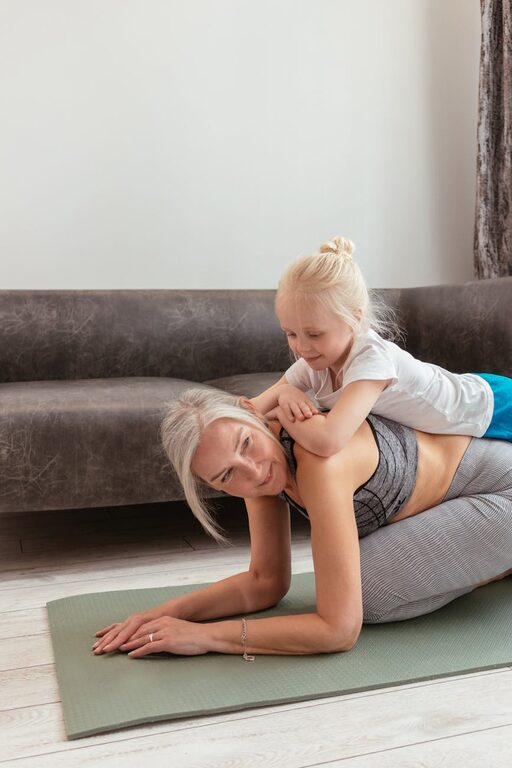Stretching is a simple yet powerful way to improve your physical health and well-being. Whether you’re an athlete, someone who works at a desk all day, or just looking to move more freely, incorporating stretching into your daily routine can offer lasting benefits. The best part? You don’t need special equipment or a gym membership—you can do it right at home. This beginner’s guide will walk you through the basics of stretching, explain its benefits, and provide easy routines to get you started.
Why Stretching Matters
Stretching helps to lengthen your muscles, improve flexibility, and increase your range of motion. It can also:
– Reduce muscle stiffness and soreness
– Improve posture and balance
– Enhance circulation and circulation to your muscles
– Reduce stress and promote relaxation
– Prevent injuries by preparing muscles for activity
By making stretching a regular habit, you’re taking an important step toward maintaining your body’s health and mobility over time.
Types of Stretching
Before beginning, it’s helpful to understand the two main types of stretching:
1. Static Stretching
Static stretches involve holding a stretch position for 15 to 60 seconds. This helps to increase muscle length and flexibility over time. These stretches are best performed after exercising or during a dedicated stretching session.
2. Dynamic Stretching
Dynamic stretches involve controlled movements that gently take your body through its full range of motion. These are often used as part of a warm-up to prepare your muscles for activity.
For beginners starting at home, static stretching is a great place to begin since it is simple, effective, and safe.
How to Stretch Safely at Home
To maximize benefits and prevent injury, consider the following tips:
– Warm up first: Stretching cold muscles can cause injury. Warm up gently by walking or marching in place for 3–5 minutes before stretching.
– Stretch slowly: Move into each stretch gradually. Avoid bouncing or forcing your body into uncomfortable positions.
– Breathe steadily: Deep breathing helps you relax and can make stretching more effective.
– Listen to your body: Stretch until you feel mild tension but not pain. If you experience pain, ease off.
– Be consistent: Stretch 3–5 times per week to see improvements over time.
Beginner Stretching Routine You Can Try at Home
Here is a simple full-body stretching routine, taking about 10–15 minutes to complete:
Neck Stretch
– Sit or stand upright.
– Gently tilt your head to the right, bringing your ear toward your shoulder.
– Hold for 20 seconds, feeling a stretch on the left side of your neck.
– Repeat on the left side.
Shoulder Rolls
– Sit or stand with your arms relaxed.
– Slowly roll your shoulders forward in a circular motion 10 times.
– Repeat rolling them backward 10 times.
Chest Stretch
– Stand tall and clasp your hands behind your back.
– Straighten your arms and lift your chest while squeezing your shoulder blades together.
– Hold for 20–30 seconds.
Triceps Stretch
– Raise your right arm overhead and bend the elbow to reach your right hand down your back.
– Use your left hand to gently push the right elbow.
– Hold for 20 seconds, then switch arms.
Side Stretch
– Stand with your feet hip-width apart.
– Raise your right arm overhead.
– Lean your torso gently to the left, stretching the side of your body.
– Hold for 20 seconds, then switch sides.
Hamstring Stretch (Seated)
– Sit on the floor with your legs extended in front of you.
– Keep your back straight and slowly reach forward toward your toes.
– Hold for 20–30 seconds, feeling the stretch behind your thighs.
Quadriceps Stretch
– Stand near a wall or chair for support.
– Bend your right knee and bring your heel toward your buttocks.
– Grab your ankle with your right hand and gently pull your leg closer.
– Hold for 20 seconds, then switch legs.
Calf Stretch
– Stand facing a wall, placing your hands at shoulder height.
– Step your right foot back and keep it flat on the floor.
– Bend your left knee and lean forward toward the wall.
– Hold for 20 seconds, then switch legs.
Tips for Making Stretching a Habit
– Stretch at a set time each day, such as after waking up or before bedtime.
– Use reminders on your phone or calendar to keep you consistent.
– Pair stretching with activities you enjoy, like listening to music or a podcast.
– Track your progress by noting how your flexibility improves.
– Stay patient—flexibility develops gradually with regular practice.
When to Consult a Professional
If you have any existing injuries, chronic pain, or medical conditions, it’s wise to talk with a healthcare or fitness professional before starting a new stretching routine. They can help tailor exercises to your needs and ensure you stretch safely.
—
Stretching at home doesn’t need to be complicated or time-consuming. With this beginner’s guide, you now have the tools and knowledge to get started confidently. Remember, consistency and listening to your body are key. Happy stretching!

